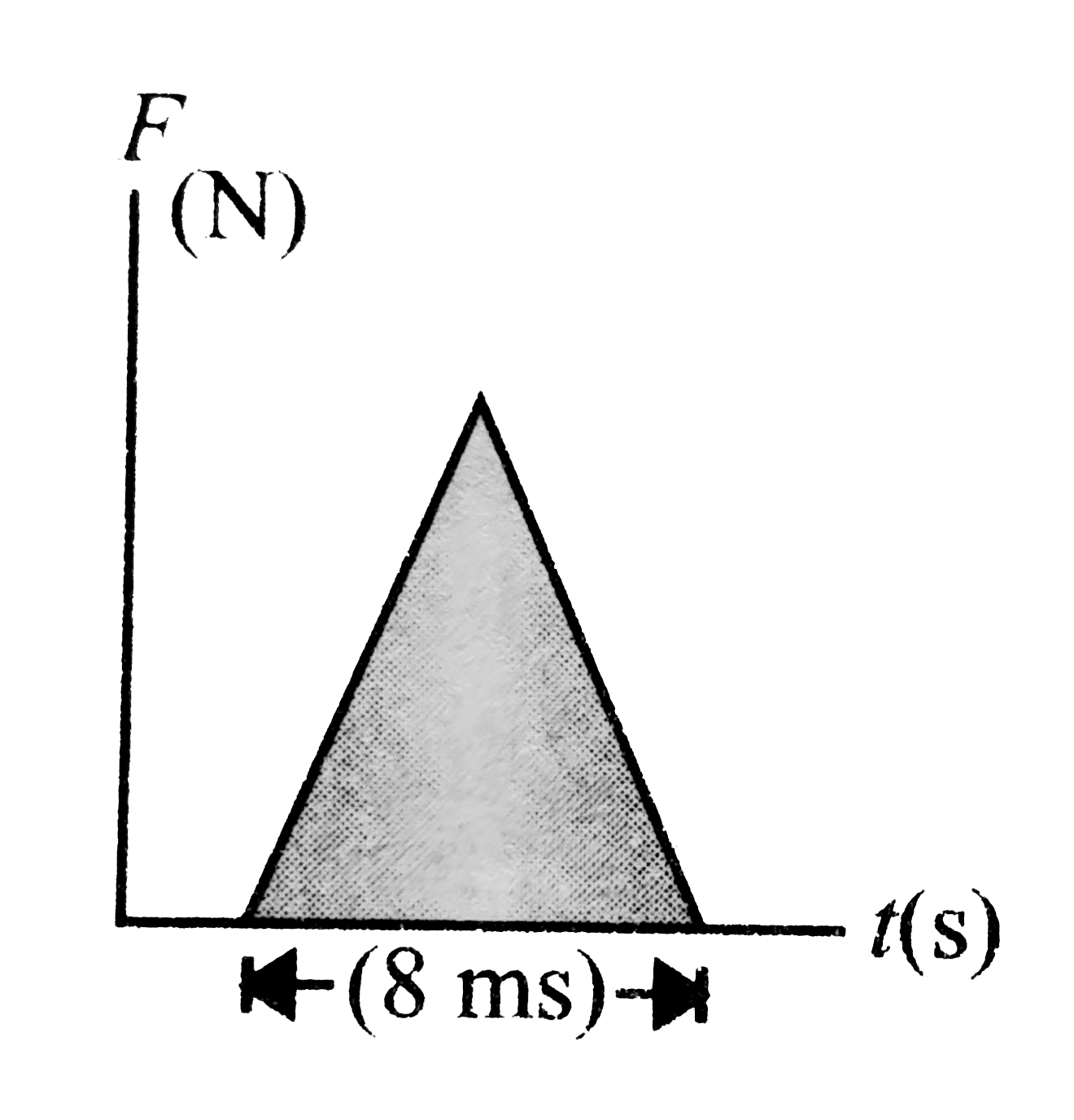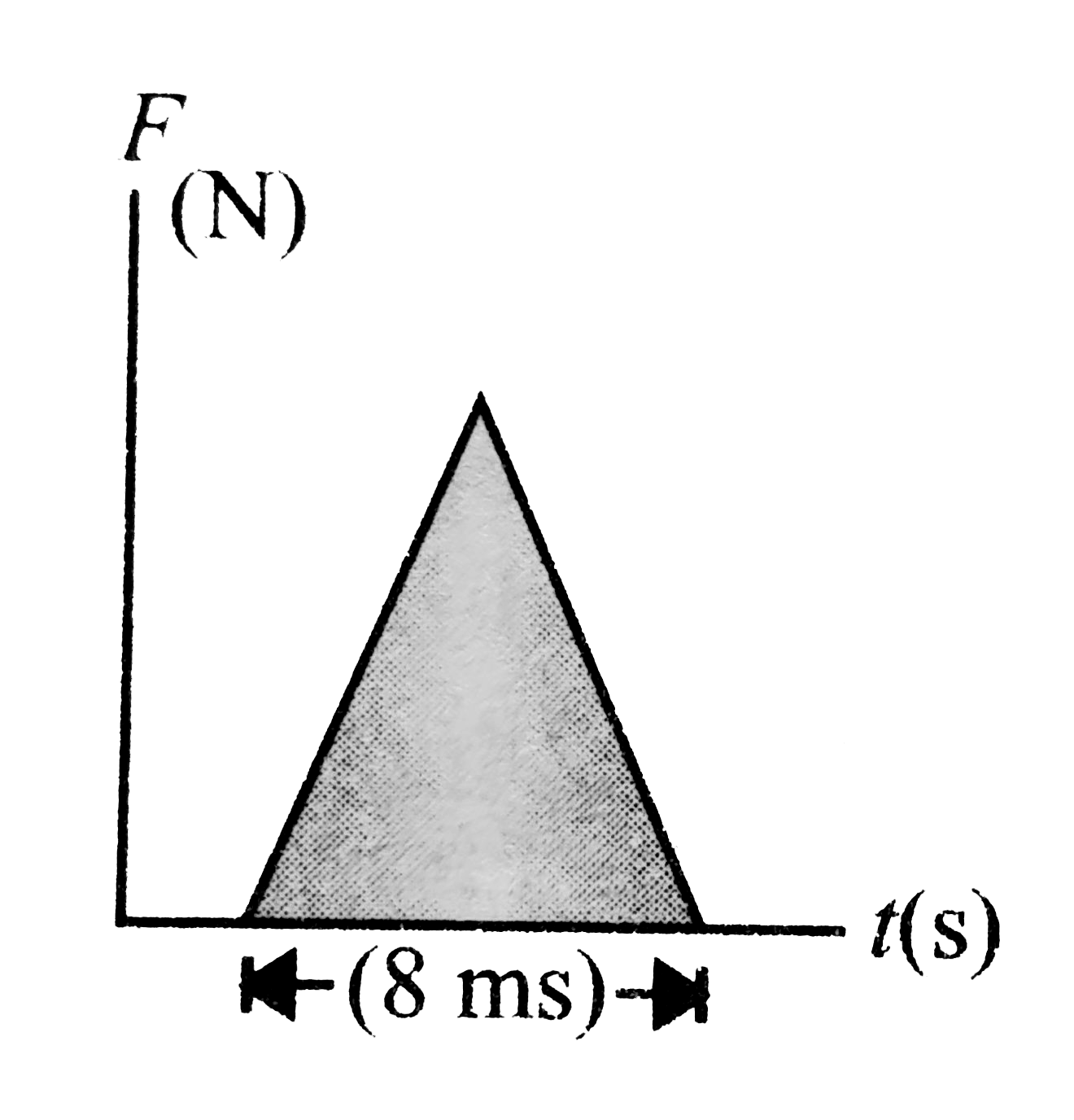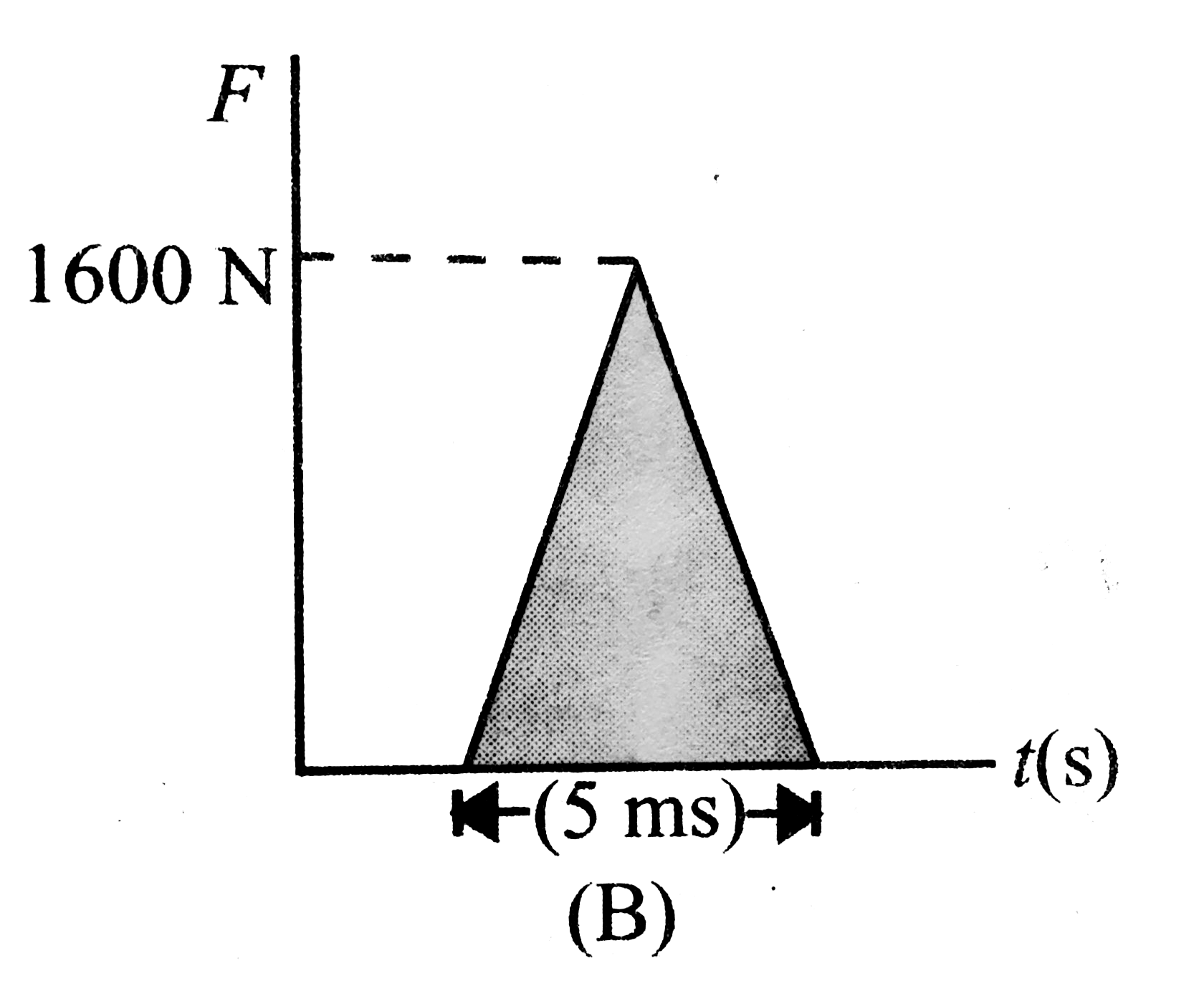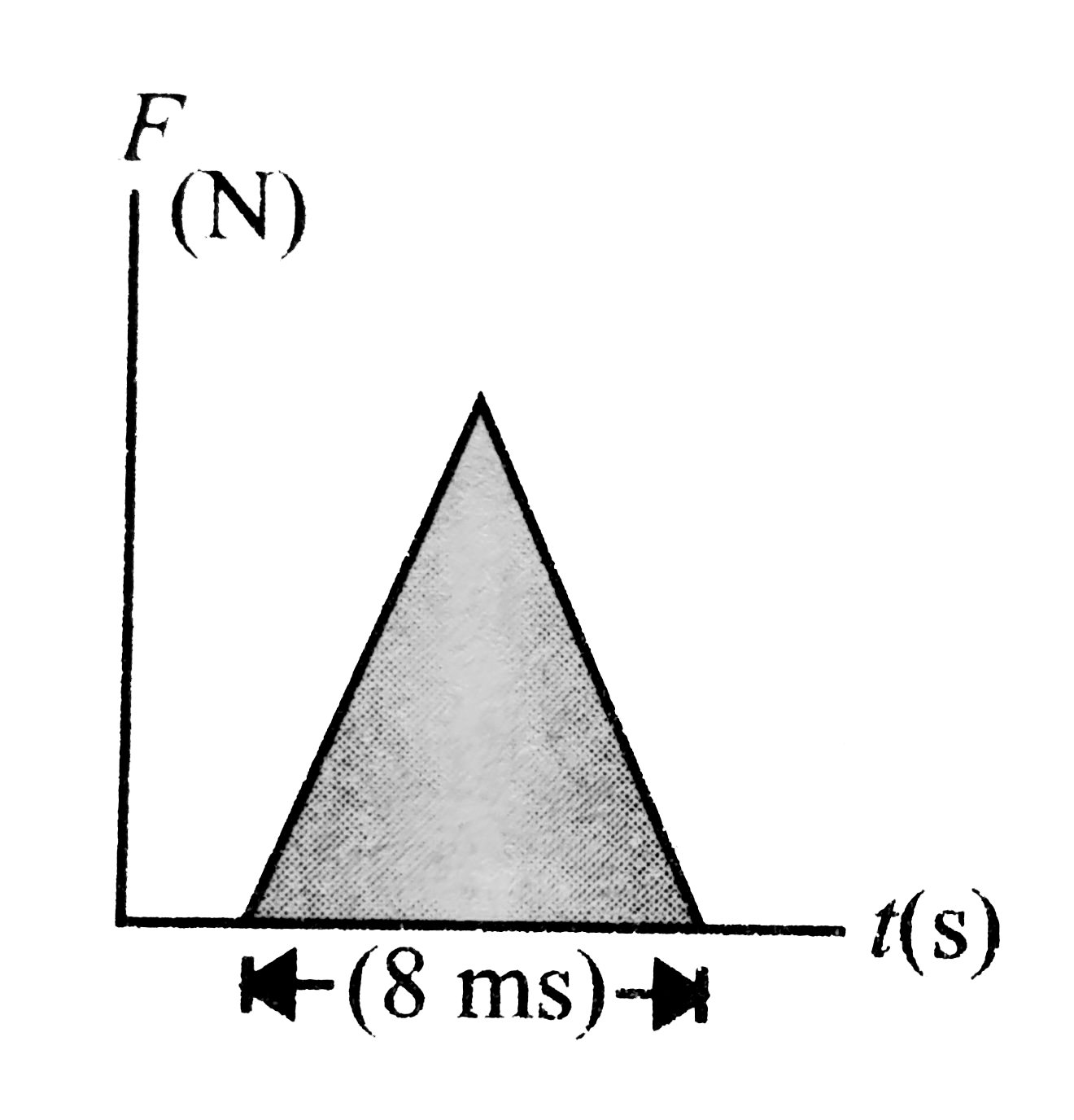A boy hits a baseball with a bat an imparts an impulse J to the ball. The boy hits the ball again with the same force, except that the ball and the bat are in contact for twice the amount of time as in the first hit.
half the original impulse
half the original impulse
twice. the original impulse
four times the original impulse
The correct Answer is:C
Step by step video, text & image solution for A boy hits a baseball with a bat an imparts an impulse J to the ball. The boy hits the ball again with the same force, except that the ball and the bat are in contact for twice the amount of time as in the first hit. by Physics experts to help you in doubts & scoring excellent marks in Class 11 exams.
Topper's Solved these Questions
- BOOK - ANURAG MISHRACHAPTER - IMPULSE AND MOMENTUMEXERCISE - L-221videos
IMPULSE AND MOMENTUM
- BOOK - ANURAG MISHRACHAPTER - IMPULSE AND MOMENTUMEXERCISE - L-3,(P-1)5videos
IMPULSE AND MOMENTUM
- BOOK - ANURAG MISHRACHAPTER - IMPULSE AND MOMENTUMEXERCISE - Example50videos
IMPULSE AND MOMENTUM
- BOOK - ANURAG MISHRACHAPTER - FORCE ANALYSISEXERCISE - Matching type13videos
FORCE ANALYSIS
- BOOK - ANURAG MISHRACHAPTER - RIGID BODY MOTIONEXERCISE - MATCH THE COLUMN12videos
RIGID BODY MOTION
Similar Questions
A batsman hits a cricket ball which then rolls on a level ground. After covering a short distance, the ball comes to rest. The ball slows to a stop because (a) the batsman did not hit the ball hard enough, (b) velocity is proportional to the force exerted on the ball, (c ) there is a force on the ball opposing the motion ,(d) there is no unbalanced forcr on the ball, so the ball would want to come to rest.
View SolutionA boy throws a ball with a velocity u at an angle θ with the horizontal. At the same instant he starts running with uniform velocity to catch the ball before it hits the ground. To achieve this he should run with a velocity of
View Solution
Knowledge Check
- Question 1 - Select One
A boy hits a baseball with a bat and imparts and impulse J to the ball. And if the boy hits the ball again with the same force, except that the ball and the bat are in contact for twice the amount of time as in the first hit. The new impulse equals.
Ahalf the original impulseBthe original impulseCtwice the original impulseDfour times the original impulse - Question 2 - Select One
Select the correct passive form of the given sentence.
The batsman had hit the ball towards the boundaryAThe ball is hit towards the boundary by the batsmanBThe ball is being hit towards the boundary by the batsmanCThe ball was hit towards the boundary by the batsmanDThe ball had been hit towards the boundary by the batsman - Question 3 - Select One
A pitcher delivers a fast ball with a velocity of 43 m/s to the south. The batter hits the ball and gives it a velocity of 51 m/s to the north. What was the average acceleration of the ball during the 1.0 ms when it was in contact with the bat ?
A1.5 m/sB34m/sC7.0m/sD49m/s
A 150 g tenins ball coming at a speed of 40m/s is hit straight back by a bat to speed of 60m/s. The magnitude of the average force F on the ball, when it is in contact for 5ms is,
View SolutionThe following problems illustrate the effect of a time-dependent force of a large average magnitude which acts on a moving object only for a short duration. Such forces are called 'impulsive' forces. According to the impulse-momentum theorem, impulse delivered to a body is equal to the change of linear momentum of the body.
A ball of mass 250g is thrown with a speed of 30m/s. The ball strikes a bat and it is hit straight back along the same line at a speed of 50m/s. Variation of the interaction force, as long as the ball remains in contact with the bat, is as shown in Fig.

Maximum force exerted by the bat on the ball isView SolutionThe following problems illustrate the effect of a time-dependent force of a large average magnitude which acts on a moving object only for a short duration. Such forces are called 'impulsive' forces. According to the impulse-momentum theorem, impulse delivered to a body is equal to the change of linear momentum of the body.
A ball of mass 250g is thrown with a speed of 30m/s. The ball strikes a bat and it is hit straight back along the same line at a speed of 50m/s. Variation of the interaction force, as long as the ball remains in contact with the bat, is as shown in Fig.

Average force exerted by the bat on the ball is
Let us consider another example. The given ball of mass 250g is dropped from a height 5m on a hard floor. Force exerted by the floor on the ball, as long as these are in contact, varies with time as shown in Fig.
 View Solution
View SolutionThe following problems illustrate the effect of a time-dependent force of a large average magnitude which acts on a moving object only for a short duration. Such forces are called 'impulsive' forces. According to the impulse-momentum theorem, impulse delivered to a body is equal to the change of linear momentum of the body.
A ball of mass 250g is thrown with a speed of 30m/s. The ball strikes a bat and it is hit straight back along the same line at a speed of 50m/s. Variation of the interaction force, as long as the ball remains in contact with the bat, is as shown in Fig.
 After collision with the hard floor, the ball will bounce to a height View Solution
After collision with the hard floor, the ball will bounce to a height View SolutionIn a cricket match , a batsman hits a boundary 6 times out of 30 balls he plays . What is the probability that in a given throw, the ball does not hit the boundary ?
View Solution

